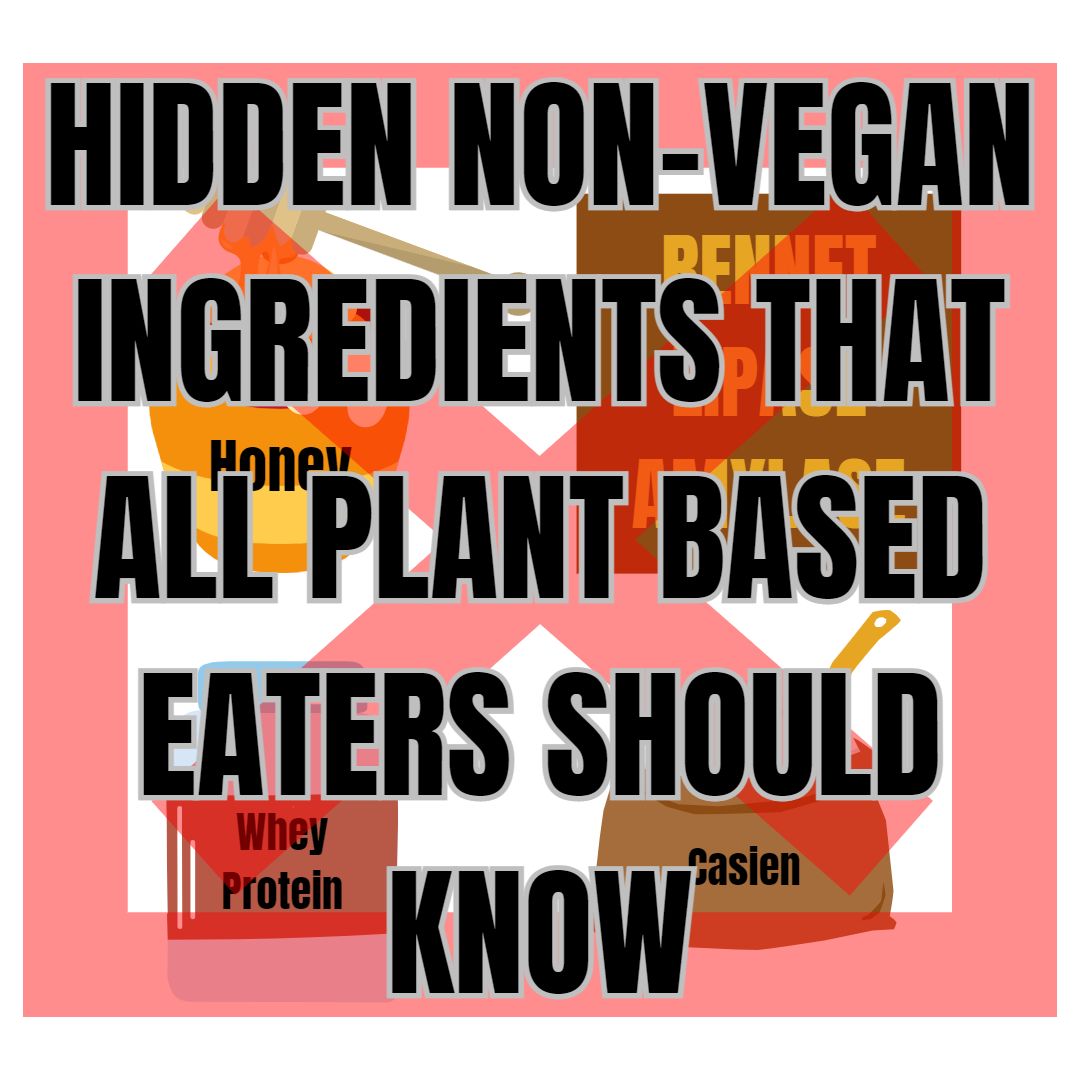Eating a vegan diet means avoiding all animal products, including meat, dairy, and eggs. However, there are also many less commonly known non-vegan ingredients to be aware of. Here are some non-vegan ingredients that are slightly more common:
Honey: While honey is often considered to be a healthy food, it’s not vegan. Honey is made by bees, and many vegans believe that it is exploitative of bees.
Gelatin: Gelatin is a protein that is derived from animal collagen, and it’s often used as a gelling agent in foods like gummy candies, marshmallows, and jello. It can also be found in some medications and supplements.
Casein: Casein is a protein that is derived from milk, and it’s often used in processed foods like protein bars. Look for vegan alternatives made from soy, nuts, or peas.
Whey: Whey is a protein that is derived from milk, and it’s often used in protein powders, sports bars, and other processed foods.
Then there are the much less commonly known non-vegan ingredients which can be somewhat hidden in terminology. The following ingredients are derived from enzymes (used to break down fats, oils, starches) or monoglycerides (a type of emulsifier) and are generally not on a plant based eater’s radar:
Rennet: An enzyme derived from the stomachs of young calves. Instead, look for versions of rennet that are produced from vegetables or microbial products.
Lipase: An enzyme that breaks down fats and oils and is used in baked goods.
Amylase: An enzyme that breaks down starches and is used in bread, beer, and other fermented foods.
Glycerol Monostearate: A monoglyceride commonly used in baked goods.
Glycerol Monopalmitate: A monoglyceride commonly used in processed foods.
Finally, there are also non-vegan ingredients that are used in the production of food and alcohol processing. Some common ones to avoid include isinglass (derived from fish bladder), bone char (used in sugar refining) and gelatin. There are many vegan-friendly options available, so be sure to check the label or do some research before you make a purchase.
For more information on these and other ANIMAL-DERIVED NON-VEGAN INGREDIENTS, you can refer to the well-known animal rights organization PETA (People for the Ethical Treatment of Animals). It’s important to note that while PETA is a reputable source of information, its website may contain graphic images and videos that some readers may find upsetting.
GATHER THE INFORMATION AND DECIDE HOW YOU WANT TO NAVIGATE YOUR PLANT BASED JOURNEY
As a plant based eater, you have the flexibility to choose the level of veganism that works best for you. It’s always a good idea to chart your path with a set goal in mind, so take a minute to fill out a PLANT BASED PLANNING QUESTIONNAIRE. Here are some choices to consider:
1. Follow a strict plant based only policy, meaning only consuming foods that are certified vegan or that explicitly state “plant based only” on the label. You’ll need to avoid all animal products and byproducts, as well as any questionable ingredients like the enzymes and monoglycerides mentioned above.
2. Choose a pretty strict plant based only policy, but it is ok if not “certified” vegan.
3. Choose a pretty strict plant based only policy, but be flexible with grey-area ingredients which are quite a bit harder to decipher (like those enzymes and monoglycerides derived from animal sources.
4. Choose to consume only plant based ingredients, but ok for the label to indicate “may contain” some non-vegan ingredient because that ingredient is not a true factor of the product (otherwise this product would be listed in the ingredients). This approach allows for greater flexibility in food choices while still maintaining a mostly plant based diet.
5. Choose to consume only plant based ingredients but it is ok if something is produced in a facility that also makes non-plant based foods – which can increase the chance of cross-contamination.
6. Choose a more open plan across the plant based spectrum, requiring the majority of ingredients in an item to be plant based, but a few of the very minor end ingredients are not required.
Years ago, these flexible options toward a plant based lifestyle were not accepted in the vegan community, but today it is a much more open-minded lifestyle where there is a spectrum to each individual approach. It can allow for greater flexibility in food choices while still maintaining a mostly plant based diet and also allow for individuals to work their way into a more vegan lifestyle. Knowing the hidden non-vegan ingredients can help you make an informed decision along your plant based journey. By educating yourself and making conscious choices, you can ensure that you’re living a vegan lifestyle that aligns with your values and health goals.






